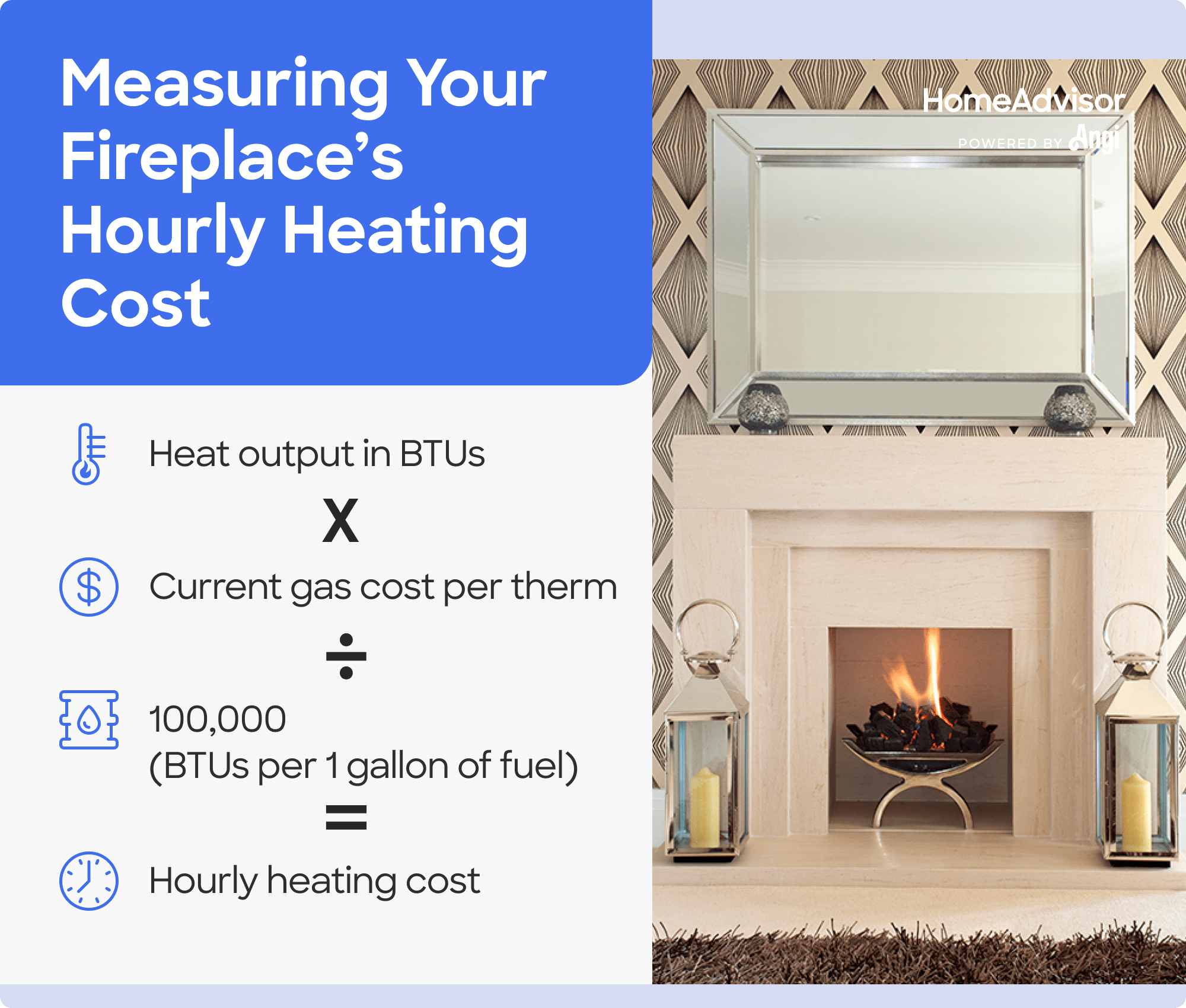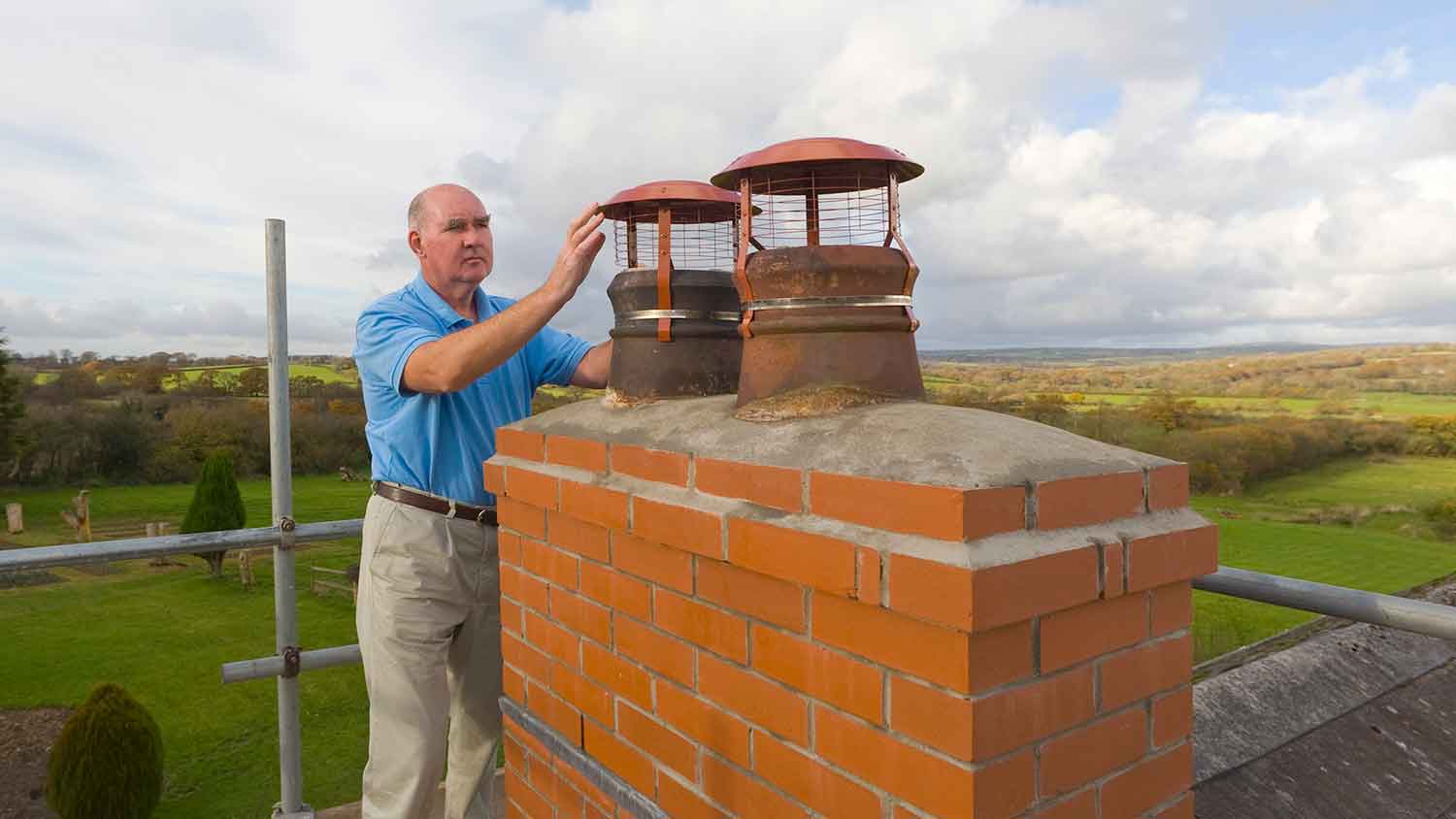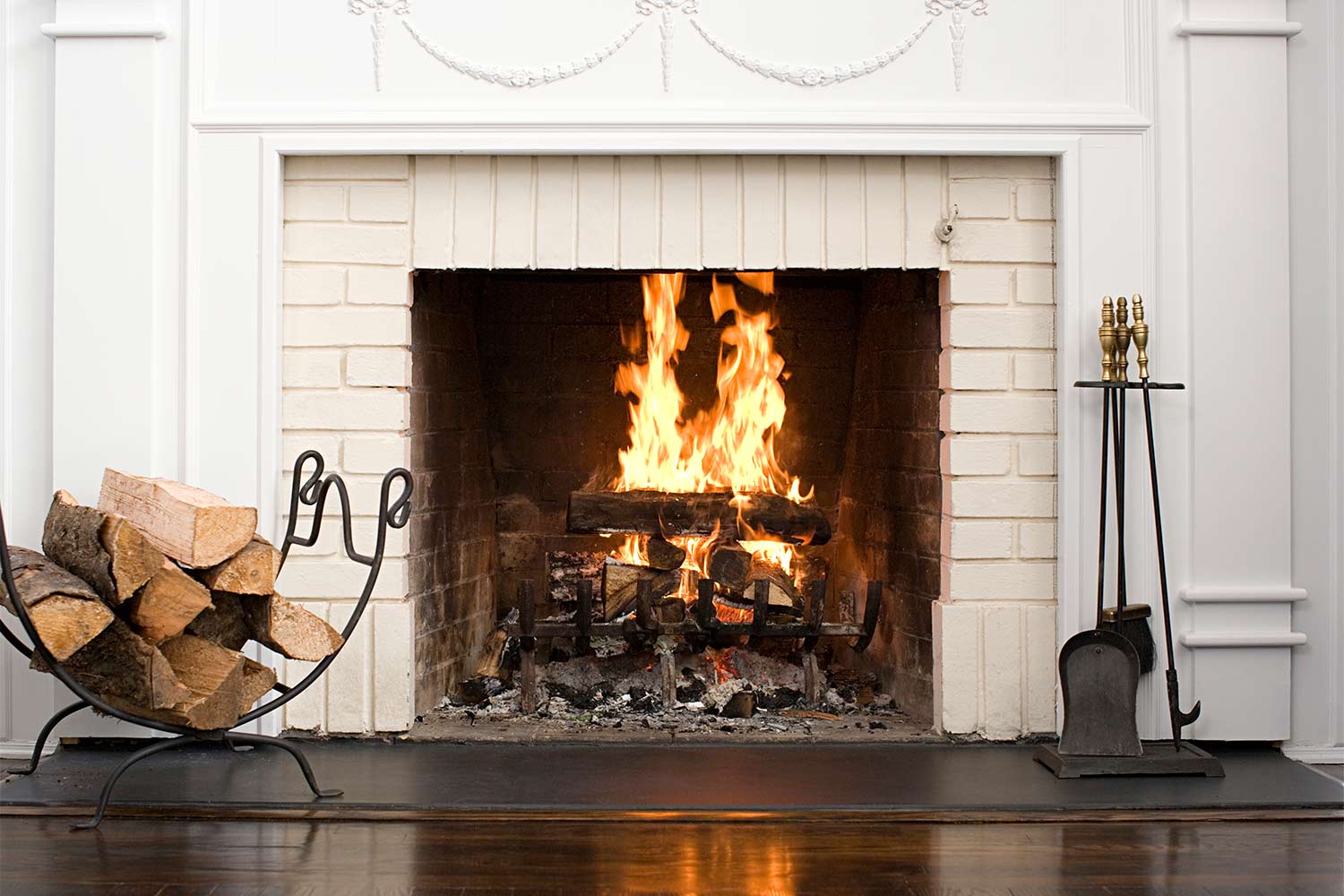
Budget for the cost to build an outdoor fireplace based on factors such as materials, fuel type, professional labor, maintenance, and more.
Converting a wood fireplace to gas costs an average of $3,000


On average, you’ll spend between $500 and $5,500 on the cost to convert a wood-burning fireplace to gas, with the final price driven by the fireplace style, your location, and overall project scope.
Most homeowners pay an average of $3,000 for the full conversion.
Professional installation ensures safety, compliance, and efficient operation.
Gas fireplaces offer cleaner operation, reduced maintenance, and enhanced convenience.
Upgrading can significantly improve home value and comfort.
This article was updated using automation technology and thoroughly reviewed for accuracy by HomeAdvisor Editor Ryan Noonan.
The average cost to convert a wood-burning fireplace to gas ranges from $500 and $5,500, with a national average of $3,000. Factors like fireplace type, materials, labor, and how often you use your fireplace can all influence the final price. Budgeting wisely and hiring a professional ensures a safe, efficient upgrade.
How much you’ll pay for your fireplace conversion depends on a variety of factors. Here’s a closer look at how your total breaks down.
Your total spend hinges on the kind of gas setup you choose. Swapping in gas logs is the budget pick, though it puts out the least heat. Installing a gas insert costs more upfront but delivers the highest heat output and overall efficiency. For gas fireplace inserts, the average cost is $3,600.
| Conversion Type | Average Cost |
|---|---|
| Vented | $5,000 |
| Ventless | $1,500 |
Compare the differences between vented and ventless options below.
| Vented | Ventless |
|---|---|
| Some heat escapes outside | Heat is retained inside the home |
| Less efficient burning | More efficient burning |
| Pollutants vented outdoors | Some contaminants in indoor air |
| Most expensive gas fireplace option | Less expensive option |
| Requires a chimney or exterior vent | No vent required |
| Complies with building codes | Not legal in some areas |
A vented gas-log conversion averages $5,000. Although they give off less heat than ventless models, they remain popular for their realistic flames and emissions-free venting.
Your installer will run a gas line to the fireplace, remove the damper or weld it to be permanently open to prevent asphyxiation and carbon monoxide poisoning, and add a grate to hold the logs. Then, they’ll add the gas logs, sand, and other substrates—like fire glass or lava rock—and possibly an electrical line.
A ventless gas-log conversion costs an average of $1,500. Because the design recirculates indoor air, these models cost less than vented systems and burn more efficiently, producing greater heat output.

Converting a fireplace to a gas fireplace insert costs between $2,000 and $5,500. Whether you have an existing masonry fireplace or an electric fireplace insert, converting to a gas fireplace insert is the most costly option, but it provides the most heat.
Depending on the existing setup, you may need to add a direct vent so the outside air can be drawn in for combustion, and the exhaust is easily removable without entering your home. This is optional if you already have a chimney or a natural or direct vent.
Materials for converting a wood-burning fireplace to gas start as low as $150 for a basic gas-log setup. High-end inserts featuring wide viewing areas, LED flame effects, or smart-home connectivity can climb past $5,000.
Labor rates swing widely. If you already have a vent and gas line in place, installing vented gas logs might cost as little as $500.
However, if your fireplace needs significant repairs or construction—such as paying for chimney repair costs or adding a direct vent—or you want a lot of custom work to make a real feature of your fireplace, you could pay up to $15,000.
The cost of labor and materials is fairly evenly split on standard conversions. However, labor costs will increase significantly if you need a lot of work done to make the conversion safe.
Beyond your chosen fireplace style, several add-ons can move the needle on price. Running a new gas line, installing a direct vent, or repairing an existing chimney will all raise the final tab.
Installing a natural gas line costs between $200 and $1,000, depending on how far the line has to travel. It costs an average of $15 to $25 per linear foot, including parts and labor. You'll need a natural gas line if you're converting a wood or electric fireplace into a gas fireplace, as you'll need a way to transport the fuel from the gas main to your fireplace.
Before you change the fireplace, you should have the chimney cleaned and inspected. Hiring a chimney sweep costs between $100 and $150, while a chimney inspection costs an average of $450. This removes any potentially harmful buildup, such as soot and creosote.
Leave your fireplace conversion project to a licensed local fireplace installation pro. Working with gas lines and venting is highly regulated, and most states require certified professionals to handle the job safely and up to code.
Don’t attempt this job on your own. Installing a fireplace incorrectly is dangerous, and the fireplace, vent, and fuel line all require proper, professional installation.
No place is more important than your home, which is why HomeAdvisor connects homeowners with local pros to transform their houses into homes they love. To help homeowners prepare for their next project, HomeAdvisor provides readers with accurate cost data and follows strict editorial guidelines. After a project is complete, we survey real customers about the costs to develop the pricing data you see, so you can make the best decisions for you and your home. We pair this data with research from reputable sources, including the U.S. Bureau of Labor Statistics, academic journals, market studies, and interviews with industry experts—all to ensure our prices reflect real-world projects.
From average costs to expert advice, get all the answers you need to get your job done.

Budget for the cost to build an outdoor fireplace based on factors such as materials, fuel type, professional labor, maintenance, and more.

Use this guide to budget for fireplace remodel costs based on factors such as surround materials, labor, repairs, part replacements, and more.

Budget for gas fireplace insert costs based on factors such as vent type, labor, permits, fireplace surround material, and more.

Who does chimney inspections? Learn when to hire a chimney professional, other pro options, inspection levels, and typical chimney inspection costs

Not sure who to hire for a fireplace remodel? See when to call a fireplace contractor, masonry contractor, or handyperson—and what to expect.